In today’s fast-paced digital world, having a strong content calendar is absolutely crucial for the success of your SaaS marketing efforts. A well-structured content calendar is a roadmap, guiding your content creation and distribution strategy. It ensures that your content is consistent and timely and helps you stay organized and focused on reaching your target audience effectively. In this article, we will delve into the importance of a content calendar in SaaS marketing and explore key elements and steps to building, optimizing, and measuring the success of your content calendar for maximum impact.
Understanding the Importance of a Content Calendar in SaaS Marketing
Before we dive deeper into the nitty-gritty of building a strong content calendar, let’s first understand what a content calendar is and why it is of utmost importance in SaaS marketing.
A content calendar is essentially a schedule that outlines the planned content for your SaaS marketing campaigns. It provides a clear framework for organizing and managing your content production, distribution, and promotion efforts. Having a content calendar in place can avoid the last-minute hustle and ensure that your marketing messages are consistently delivered to your target audience.
But why is a content calendar so crucial in SaaS marketing? Let’s explore further.
Defining a Content Calendar
A content calendar is more than just a basic spreadsheet or a list of upcoming blog topics. It is a comprehensive tool that lets you strategically plan, create, and distribute your content. A well-structured content calendar typically includes key information such as the content topic, format, target audience, publishing channels, and scheduled publishing dates.
Having all this information in one place helps you envision your content strategy and makes it easier to collaborate with your team and track the progress of your marketing campaigns.
Imagine a scenario where multiple team members work on different aspects of your SaaS marketing. Without a content calendar, keeping everyone on the same page becomes challenging. However, with a well-defined content calendar, you can ensure that everyone knows their responsibilities and deadlines, leading to better coordination and efficiency.
Benefits of a Well-Structured Content Calendar
Now that we understand what a content calendar is, let’s explore its benefits to your SaaS marketing strategy.
1. Improved Organization: With a content calendar, you can plan your content in advance and ensure a consistent flow of valuable information to your audience. By mapping out your content topics and publishing dates, you can avoid the chaos of last-minute content creation and ensure that your marketing efforts are well-organized.
2. Enhanced Productivity: Having a clear roadmap of what content needs to be created and published can streamline your content production process and eliminate any guesswork or last-minute decisions. With a content calendar, you can allocate resources effectively, assign tasks to team members, and set realistic deadlines, resulting in improved productivity and timely content delivery.
3. Consistency in Messaging: A content calendar lets you align your messaging across different channels and touchpoints, ensuring that your brand voice and value proposition remain consistent. By planning your content in advance, you can strategically craft your messaging to resonate with your target audience and reinforce your brand identity. Consistency in messaging helps build trust and credibility, making it easier for your audience to connect with your SaaS product or service.
4. Optimized Content Distribution: With a content calendar, you can plan the distribution of your content across various channels, such as your blog, social media platforms, email newsletters, and more. By strategically scheduling your content, you can maximize its reach and engagement, ensuring that it reaches the right audience at the right time. This systematic approach to content distribution helps you make the most of your marketing efforts and generate better results.
In conclusion, a content calendar is an indispensable tool for SaaS marketers. It helps you stay organized and productive and ensures consistency in messaging and optimized content distribution. By investing time and effort in building a well-structured content calendar, you can take your SaaS marketing strategy to new heights and drive meaningful results for your business.
Key Elements of a Strong Content Calendar
A strong content calendar is built upon key elements that ensure its effectiveness in driving your SaaS marketing success. Let’s explore some essential components.
Identifying Your Target Audience
The first step in creating a strong content calendar is identifying and understanding your target audience. Your content may miss its mark without a clear understanding of who you are trying to reach. Take the time to conduct thorough research and create buyer personas that represent your ideal customers. This will help you tailor your content to their specific needs, pain points, and preferences.
When identifying your target audience, it’s important to consider demographic factors such as age, gender, location, and income level. However, don’t stop there. Dive deeper into psychographic factors like interests, values, and motivations. Understanding the psychology behind your audience’s decision-making process will allow you to create content that truly resonates with them.
Additionally, consider conducting surveys or interviews with your existing customers to gather insights about their preferences and challenges. This qualitative data can provide valuable information that will shape your content strategy and ensure that your calendar is aligned with your audience’s needs.
Determining the Right Content Mix
A successful content calendar considers the diverse preferences of your target audience and provides a mix of content formats to cater to their needs. This could include blog posts, articles, videos, infographics, case studies, webinars, and more. Determining the right content mix can engage your audience effectively and keep them returning for more.
When determining the right content mix, consider the different stages of the buyer’s journey. Create content that addresses each stage, from awareness to consideration to decision-making. This will ensure that you provide value at every step of customer interaction with your brand.
Furthermore, don’t be afraid to experiment with different formats and mediums. For example, if you notice that your audience engages more with video content, consider incorporating more video tutorials or product demos into your content calendar. By diversifying your content mix, you can capture the attention of a wider audience and keep them engaged with your brand.
Setting a Consistent Posting Schedule
Consistency is key when it comes to content marketing. Setting a consistent posting schedule helps you stay organized and signals to your audience that you are a reliable source of valuable information. Whether it’s publishing a new blog post every Tuesday or sending out a weekly newsletter, stick to a schedule that works for your team and resonates with your audience.
Consider the frequency that works best for your audience and your team’s capacity when setting a posting schedule. It’s important to balance providing regular content updates and not overwhelming your audience with too much information. Consistency is more important than frequency, so focus on consistently delivering high-quality content rather than publishing content daily.
Additionally, leverage analytics and data to determine the optimal posting times for your target audience. Use tools like Google Analytics or social media insights to understand when your audience is most active and engaged. By aligning your posting schedule with these peak times, you can maximize the visibility and impact of your content.
Steps to Building Your Content Calendar
Now that we have covered the key elements, let’s walk through the steps to building a strong content calendar.
Conducting a Content Audit
Before diving into creating new content, it’s important to conduct a content audit to evaluate the effectiveness of your existing content. Identify high-performing pieces, analyze engagement metrics, and identify any gaps or areas for improvement. This will help you make informed decisions while planning your future content strategy.
Planning Your Content Strategy
Once you have a clear understanding of your target audience and have conducted a content audit, it’s time to plan your content strategy. Determine your overall goals and objectives, map out the topics and themes you want to cover, and brainstorm ideas for content pieces that align with your audience’s needs and your business objectives.
Implementing Your Content Calendar
With your content strategy in place, it’s time to implement your content calendar. Use a digital tool or a template to organize and schedule your content. Document critical information such as the content title, format, target audience, keywords, publishing dates, and distribution channels. Ensure to involve all relevant team members and set clear deadlines to keep everyone accountable.
Optimizing Your Content Calendar for Maximum Impact
Building a content calendar is not a one-time task – it requires ongoing optimization to achieve maximum impact. Here are some ways to optimize your content calendar:
Leveraging Analytics for Content Optimization
Regularly analyze the performance of your content using analytics tools. Identify the content pieces that are driving the most traffic, engagement, and conversions. Use this data to refine your content strategy and focus on creating more content that resonates with your audience.
Regularly Updating and Refining Your Content Calendar
A content calendar should never be set in stone. As your business evolves and new opportunities arise, it’s important to update and refine your content calendar accordingly. Regularly review and analyze your content plan, make necessary adjustments, and experiment with new content formats or distribution channels to keep your marketing efforts fresh and effective.
Measuring the Success of Your Content Calendar
Measuring the success of your content calendar is essential to ensure that your efforts are generating the desired results. Let’s explore some key performance indicators (KPIs) to consider:
Key Performance Indicators for Your Content Calendar
1. Website Traffic: Monitor the increase in website traffic resulting from your content efforts.
2. Engagement Metrics: Track metrics such as time spent on a page, social media shares, comments, and interactions to gauge audience engagement.
3. Conversion Rate: Measure the number of leads or customers acquired through your content marketing initiatives.
Interpreting and Acting on Your Results
The data you collect from measuring your content calendar’s success is invaluable. Use it to analyze what’s working and what’s not, identify areas for improvement, and make data-driven decisions to optimize your future content efforts. Continually refine your content strategy and adapt to the evolving needs of your audience and industry.
Invest in Your SaaS Marketing Success
Building a strong content calendar is an investment in SaaS marketing success. Understanding the importance of a content calendar, focusing on key elements, following a systematic approach, optimizing for maximum impact, and measuring your results can create a solid foundation for your content marketing strategy. So start planning, and watch your SaaS marketing efforts soar!
Want to maximize your SaaS content marketing results? Work with the experts at Tailored Ink. Reach out, and let’s chat.




